To kick off Women’s History Month, ELB Learning brought together three powerhouses in the world of learning and development (L&D)—Jess Almlie, learning and performance strategist, Tracie Cantu, chief learning strategist, and Dr. Alaina Szlachta, chief measurement architect—for a dynmic, insightful conversation on the evolution of L&D and the gender disparities that persist within the industry. With decades of combined experience in L&D, this conversation shed light on critical issues facing L&D professionals today, from gender disparities in leadership to how the field must evolve to remain relevant and impactful.
This webinar wasn't just a celebration—it was a call to action.
In case you missed it, read on for a recap of the key themes and takeaways from this spicy, thought-provoking discussion.
Many L&D professionals don’t set out to work in this field—it finds them. Whether through teaching, training roles, or adjacent functions in HR and operations, the common thread is a deep curiosity and commitment to people development. What may start as a role often grows into more of a passion, which then morphs into something of a calling that fuels longevity and drives innovation.
The Leadership Gap: More Than a Numbers Problem
Women make up the majority of L&D professionals at the entry level, yet the higher you go, the fewer you’ll find in leadership. According to recent data, 67% of entry-level roles in L&D are held by women, but men hold 69% of executive-level roles. This isn’t a talent problem, it’s a pipeline problem—a systemic one.
The gap begins at middle management. Fewer women are being promoted into those crucial stepping-stone roles, which means fewer make it to the top. Without mentors, sponsors, and role models in leadership, the cycle continues. Breaking it requires intentional development, strategic support, and a shift in how leadership potential is cultivated within organizations.
Rethinking L&D’s Role in the Business
Too often, L&D is treated as a support function that’s called in to solve problems after the fact, or to fulfill a training request without clarity on the problem it’s meant to solve. This reactive mindset keeps the function stuck in a transactional role, rather than allowing it to operate as a strategic partner to the business.
The shift starts with reframing. Instead of asking, “What training do you need?” ask, “What problem are you trying to solve?” From there, determine whether training is truly the solution or just part of it. By positioning learning as a lever for solving business problems, L&D teams can elevate their role and prove their value.
Learning to Say “No” and Why It Matters
Saying no to a training request doesn’t mean saying no to helping the business. It means being responsible stewards of time, budget, and people resources. When done thoughtfully, turning down a request—or better yet, redirecting it toward a more effective solution—builds credibility.
One powerful tactic is cost framing: If a training program costs $100,000 to create and deploy, are stakeholders comfortable investing that money without knowing if it will actually move the needle? That question alone can shift a surface-level request into a strategic conversation.
Saying “no” (or “yes, if…”) is an act of leadership. It aligns L&D with the organization's priorities, ensures resources are focused on outcomes, and signals that the function operates with intent, not just enthusiasm.
Data Is the Differentiator
To lead with influence, L&D must move beyond vanity engagement metrics and learner satisfaction. Business leaders want to know: Did performance improve? Did this program increase productivity, reduce turnover, or help us reach a key KPI?
Collecting and leveraging data to answer those questions isn’t optional—it’s essential. Measurement creates feedback loops, drives continuous improvement, and helps L&D secure a seat at the strategic table. It also allows the function to speak the language of the business (not the L&D industry) to align learning outcomes with organizational goals.
The Future of L&D Is Scalable, Strategic, and Systems-Driven
Looking ahead, the most successful learning teams won’t be the ones creating the flashiest content; they’ll be the ones solving real problems at scale. That means building systems that are efficient, repeatable, and integrated with the broader business strategy.
Emerging technologies, including AI, will be part of that evolution. But technology isn’t the future in itself; it’s a tool. The real transformation will come from L&D teams shifting from “creators of content” to “enablers of performance.” This includes prioritizing enablement over service, business alignment over completion rates, and adaptability over rigid skill frameworks.
In short: Think like a business unit, not a learning team. Strategize like an operator. Move like a change agent.
As the field matures, there’s a growing recognition that focusing solely on “skills” may be missing the mark. Skills are important, but they’re also temporary and ever-changing. What’s more sustainable is cultivating mindsets: adaptability, coachability, curiosity, and strategic thinking. These traits make teams and individuals resilient in times of change, and L&D is uniquely positioned to build them.
Final Thoughts: Lead Boldly, Build Strategically
This webinar didn’t just explore the challenges women face in L&D leadership—it offered a blueprint for transformation. The path forward is clear: get strategic, get data-savvy, get aligned with the business. Elevate L&D from a nice-to-have to a must-have by proving its impact and owning its influence.
If you want to dive deeper into the full conversation—including the audience Q&A, real-world examples, and more insights—you really need to watch the webinar.
At ELB Learning, we create strategic, custom learning solutions that drive results. Whether you're looking to build scalable training programs, integrate emerging tech, or empower your people, we can help. Learn more about our custom solutions.
Disclaimer: The ideas, perspectives, and strategies shared in this article reflect the expertise of our featured speakers, Jess Almlie, Tracie Cantu, and Dr. Alaina Szlachta. Dr. Alaina’s book, “Measurement and Evaluation on a Shoestring,” is available now. Jess's book "L&D Order Taker No More!: Become a Strategic Business Partner" is also available, and Tracie’s book, "Running L&D Like a Business: Drive Value With Learning Operations," is available for preorder.








